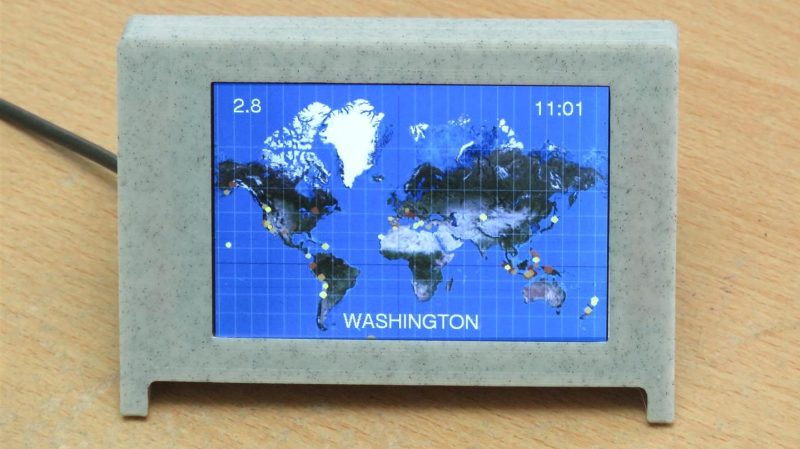The Internet has brought us the ability to share data all over the globe, and nearly instantaneously at that. It’s revolutionized the sharing of science across the world, and taking advantage of this global data network is this earthquake display from [AndyGadget].
The build relies on an ESP32 fitted with an ILI9486 TFT display. The screen is in color and has a nice 480×320 resolution. This enables it to display a reasonably legible world map using the Web Mercator projection to fit the rectangular screen. The microcontroller then pulls in information from Seismic Portal, a site that aggregates data from seismographs and other sensors scattered all over the world. Data from the site is pulled into the device live and overlaid on the world map, allowing the viewer to see the location of any current earthquakes at a glance.
It’s a great project, and one that we reckon would make a great addition to any university geology department. If it’s sparked an interest, consider diving deeper into the world of seismic analysis and data yourself!















This looks cool, but…
Before you can download and look at the code for this project you need to sign up for a Forum [1] and flash your ESP32 with something web-based called “Annex RDS”. As it says on the Annex homepage [2]: “Annex WIFI RDS, Rapid Development Suite, Scripting environment with integrated IDE for ESP8266 and ESP32 modules”. It also says: “WEB IDE directly hosted on the chip, Program, control and debug your module using your phone or tablet, No hassle with serial cables and adapters”. Yeah, thanks but no-thanks.
Look, Annex RDS may be the best thing since sliced bread – but to me it feels like a rope-in having to sign up for a Forum on an Environment/IDE that seems like an unwanted abstraction – just to peek at the code.
* References:
1. Annex RDS Forum
https://cicciocb.com/forum/index.php
2. Annex for ESP8266 and ESP32 Modules
https://cicciocb.com/